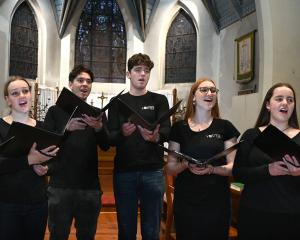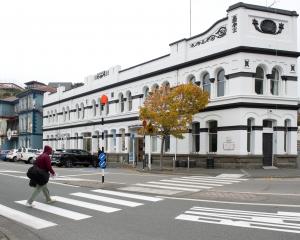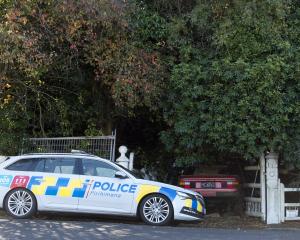It might turn out to be an international success story.
A botanical illustrator who was brought up in West Africa depicts a South American plant being grown in the Dunedin Botanic Garden winter garden glasshouse in an illustration and successfully submits it to this year's Margaret Flockton Exhibition in Sydney.
Well, that is the plan for botanical illustrator Sue Wickison, who is working on illustrations of the subtropical Aristolochia ringens, commonly referred to as gaping Dutchman's pipe.
Ms Wickison lives in Wellington, but has a house in Dunedin and visits her two University of Otago student offspring regularly.
It was on one such recent visit she spotted another Aristolochia, one of the largest singular flowers in the world, at the Botanic Garden glasshouse, Aristolochia gigantea.
These flowers can be up to 36cm long and 30cm wide.
Flies are attracted by their sight and smell, but are then captured by the flower, usually overnight, to ensure that they carry off the ripe pollen to the next plant once released.
It is just the sort of flower "which takes you out of your comfort zone" which attracts the interest of Ms Wickison, although it was not always easy to get close to examples.
The discovery of the Aristolochia gigantea led to her exploring the glasshouse and finding the smaller Aristolochia ringens (which also briefly imprisons it pollinators).
When the Otago Daily Times visited the glasshouse, plant collection curator Stephen Bishop was assisting Ms Wickison by providing some cuttings of Aristolochia ringens foliage and flowers for her to begin drawing.
It would take her about a week to do the drawing and several more weeks to complete the illustration.
Building up colour in a watercolour was a slow process, she said.
Ms Wickison was born and raised in Sierra Leone where her enthusiasm for natural history was fostered by her father, who was a teacher, amateur botanist and artist who took her on collecting expeditions.
After completing an honours degree in scientific illustration at Middlesex University, London, her career as an illustrator began at the Royal Botanic Gardens in Kew where she spent nine years.
In 1986, she visited the Solomon Islands to collect orchids for Kew and, while there, found a previously undiscovered orchid which has since been named after her - Coelogyne susanae.
She had not realised her find was previously un-named.
At the time, she was working in an area on New Georgia Island which was being logged, something which provided a mix of horror and excitement.
The horror was at the trees' felling, but it was also exciting to be able to have such ready access to the orchids which had been growing on the trees.
Ms Wickison's other achievements include a solo show at Savill Gardens in Windsor in 2007 depicting New Zealand natives and a gold medal at the Royal Horticultural Society show in London in 2008 for her work on another unusual group of plants which fascinates her, Arisaemas.
She has also produced more than 50 natural history stamp designs for several Pacific countries, including New ZealandThe Botanic Garden winter garden glasshouse is home to two other Aristolochia - Aristolochia littoralis, which has heart-shaped flowers with a velvety looking centre and Aristolochia fimbriata, which has leaf-markings similar to a cyclamen and has its flowers underneath its leaves.
People visiting the glasshouse at this time of year should be able to see all four different Aristolochia in flower, but they must remember to look up (for Aristolochia gigantea, ringens and littoralis) and down for the much smaller Aristolochia fimbriata.
The Margaret Flockton Award and exhibition is an international event aimed at promoting the appreciation and understanding of contemporary scientific illustration.
It commemorates the work of the first illustrator of the Royal Botanic Gardens in Sydney, Margaret Flockton.
Entries close in February.












